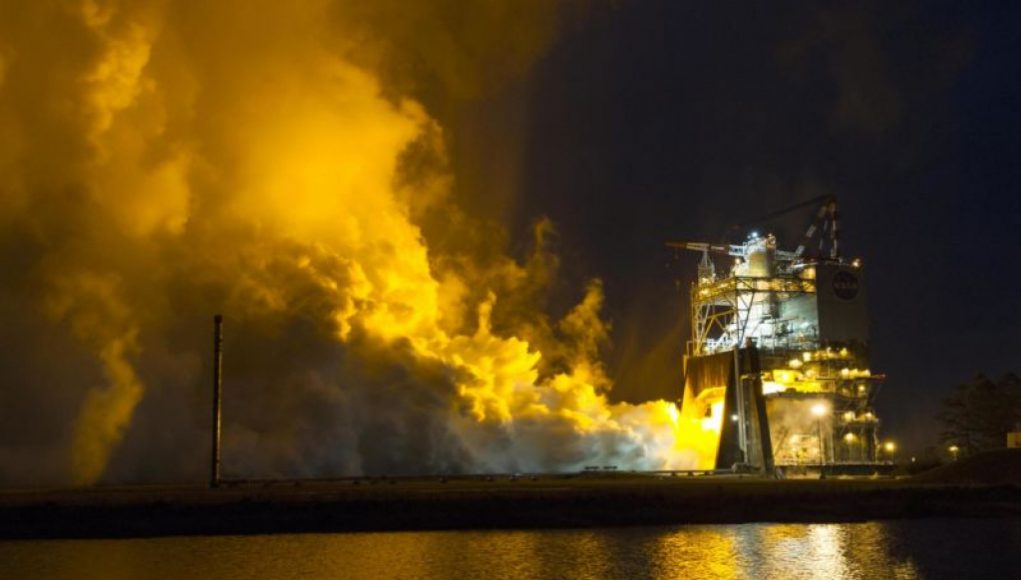NASA’s plans to return to the Moon could be in jeopardy due to out-of-control spending on propulsion for the Space Launch System rocket, according to a report by NASA Inspector General Paul Martin. The report analyzed contracts given to Aerojet Rocketdyne and Northrop Grumman for RS-25 main engines and solid-rocket boosters, respectively. The report found that efforts to refurbish engines, manufacture new ones, and produce boosters for the initial Artemis missions have resulted in about $6 billion in cost increases and more than six years in schedule delays compared to NASA’s original projections.
To put this into perspective, Martin is talking about the cost increases, not the total cost of the engines and boosters. This means that overruns for the propulsion system of the SLS rocket alone are costing the space agency about as much as it will spend on developing two reusable lunar landers—SpaceX’s Starship and Blue Origin’s Blue Moon.
The report also takes issue with NASA’s choice of cost-plus contracting, which pays the recipient the total amount of their costs plus a fee. This is in contrast to the fixed-price contracts NASA has given SpaceX and Blue Origin for landers, the design of which is much more experimental and cutting-edge in nature than repurposing space shuttle hardware.
There are other head-scratching issues raised by the report, such as the current cost of manufacturing a new RS-25 main engine, which will be used for the Artemis V mission and onward, being about $100 million. Compared to the private sector, even getting the cost of an RS-25 engine down to $70.5 million is a preposterously high price. Blue Origin manufactures engines of comparable power and size, the BE-4, for less than $20 million. And SpaceX is seeking to push the similarly powerful Raptor rocket engine costs even lower, to less than $1 million per engine.
Based on all of the new data in his latest report, Martin said his office has had to revise its estimate of the total cost of a Space System Launch, inclusive of ground systems and the Orion spacecraft. It is now $4.2 billion. If NASA does not rein in spending, it could result in a reduced availability of funds, delayed launches, and the erosion of the public’s trust in the agency’s ability to responsibly spend taxpayer money and meet mission goals and objectives—including returning humans safely to the Moon.
NASA’s latest report has confirmed what many have long feared: the agency has been spending an excessive amount of money on the Space Launch System (SLS) propulsion system.
According to the report, the Space Launch System (SLS) propulsion system has experienced dramatic cost growth due to a number of factors, such as delays in the development of key technologies and the need to extend the testing schedule due to safety concerns. The cost of the propulsion system has reportedly ballooned from $2.8 billion to $8.3 billion, a nearly 200% increase.
The agency stated that the primary problem with the project has been cost overruns, as the SLS propulsion system has gone considerably over budget. In its report, NASA suggested that the problem mainly stems from the need to extend the testing timeline, as many of the components of the system had to be tested more than once.
In its report, NASA also suggested that the delays in the development of the propulsion system have also caused the system to require more labor hours, thereby driving up costs even further. To account for these costs, the agency has proposed that their budget for the SLS propulsion system be increased by as much as $3.5 billion.
Critics of NASA’s SLS propulsion system have suggested that the agency should have found a way to control costs, particularly in light of the fact that NASA was already struggling to stay within its budget. They point out that the agency was aware of the need for improved cost controls as far back as 2017.
Despite the excessive cost overruns, NASA is still committed to delivering the SLS propulsion system on schedule. The agency stated that the system is now complete and will soon be ready for testing. While the system has experienced considerable cost growth, NASA still believes that the SLS propulsion system is a worthwhile investment.
It remains to be seen whether the agency will be able to stay within its budget when the system begins to launch. However, it is clear that NASA will have to exercise greater fiscal discipline if it is to keep the SLS propulsion system from becoming yet another costly misstep.




















